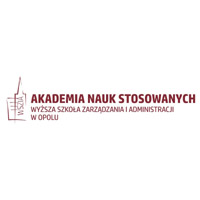In modern conditions of operation of complex structures such as steam turbine and gas turbine rotors, the importance of accurate forecasting of thermal regimes is increasing. These regimes can significantly affect their stress-deformed state, especially during startup or shutdown. Estimating temperature fields in such structures requires an effective solution to unsteady heat conduction problems in axisymmetric bodies, where the temperature field changes over time and space. To address this, numerical methods are used, particularly the Finite Element Method (FEM), which allows modeling and analyzing these processes in complex geometric conditions.
The temperature field in non-homogeneous rotational bodies bounded by a surface is described by the unsteady heat conduction equation, which is reduced to a variational equation in curvilinear coordinates. One of the key stages is the formulation of initial and boundary conditions, which define the corresponding physical constraints for the problem, such as known temperatures on the surface or changes in heat flux [1].
When applying the Finite Element Method, the solution to the problem is achieved by approximating temperature fields using bilinear functions, which describe the temperatures at the element nodes [2]. The system of equations for solving the problem becomes linear, and numerical methods such as the Finite Difference Method are used to model thermal processes over time with high accuracy.
In solving axisymmetric problems using FEM, it is assumed that the thermophysical and geometric properties within each element change insignificantly, so they are approximated as constant values within each element. The known temperature values at the boundaries of the elements are used to solve the system of equations, which contains integrals over the cross-sectional area.
Considering that the temperature field changes with respect to both spatial and time coordinates, integration algorithms, specifically the Crank-Nicolson scheme, are used for numerical solutions. This method ensures the accuracy and stability of the solution, allowing the calculation of temperatures at grid nodes at each time step.
To verify the effectiveness of the proposed methodology, numerical studies were conducted on the temperature field of a long cylinder and an infinite steel plate under the influence of convective heat exchange with the surrounding medium. In these examples, different grid sizes and FEM elements were used to analyze the impact of the number of elements on the accuracy of the results.
In the case of the long cylinder, the numerical solution showed good agreement with analytical solutions and other numerical methods when using a minimal number of elements (5 elements) with an error of no more than 3%. With an increase in the number of elements, the solution accuracy reached values with an error of up to 1%.
For the infinite plate problem, high accuracy was also achieved when comparing the results with analytical solutions. The analysis of the temperature field isolines showed that the developed method provides stable and accurate results under conditions of convective heat exchange.
The developed methodology for solving axisymmetric unsteady heat conduction problems is an effective tool for modeling temperature fields in complex structures. Numerical studies demonstrated that the Finite Element Method ensures high accuracy of solutions compared to analytical solutions and other numerical methods. The use of FEM allows for the effective solution of heat conduction problems under changing thermal regimes, which is crucial for analyzing the operating conditions of technical structures such as turbines and other energy installations.
References:
1. Alhorytm rozviazannia visesymetrychnykh zadach nestatsionarnoi teploprovidnosti / V. P. Andriievskyi, O. I. Huliar, Yu. V. Maksymiuk , S. V. Mytsiuk. Opir materialiv i teoriia sporud: Nauk.-tekh. zbirn. Kyiv. 2015. Vyp. 95. C. 123-131. [in Ukrainian].
2. Rozviazannia prostorovoi zadachi nestatsionarnoi teploprovidnosti na osnovi napivanalitychnoho metodu skinchennykh elementiv / O. I. Huliar, C. O. Pyskunov, V. P. Andriievskyi, O. O. Shkryl. Tekhnolohichnyi audyt i rezervy vyrobnytstva. 2015. № 3/2 (23). S. 80–86. [in Ukrainian].
|







